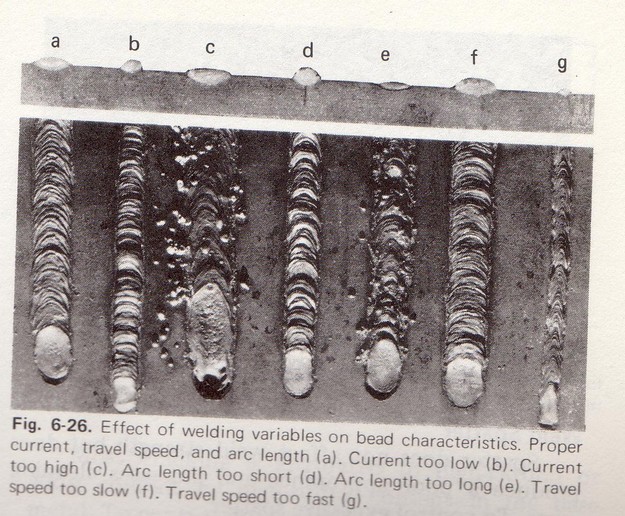ey guys!! Thanks for all the replies and advice on my last thread...
Anyways, last night and this afternoon, i spent some time in the garage practicing, and emphsysing on being steady. First, i worked a little with my least favorite rod:

Mostally with the skinny stuff, 3/32, but a little bit of 1/8 in there too...





And then, this afternoon, i got out the 7018 and tried it some. Whats the difference between 7018 and 7014??



any advice?? Once more, the 7018 started easier, was easier to use, and even looks better than the 6011. What is the porpose of 6011?? Does it have some amazing quality about it??
Anyways... Sorry for the bad 7018 pictures. Ive been borrowing a camera that took the good pics, but had to give it back. lol. $150-$200 buys a really nice digital camera, but it also buys a lot of rod and scrap metal to work with, or goes a long ways towards a nicer used welder, something other than the buzzbox.
Thanks in advance everyone!! This welding stuff sure is fun

Anyways, last night and this afternoon, i spent some time in the garage practicing, and emphsysing on being steady. First, i worked a little with my least favorite rod:

Mostally with the skinny stuff, 3/32, but a little bit of 1/8 in there too...





And then, this afternoon, i got out the 7018 and tried it some. Whats the difference between 7018 and 7014??



any advice?? Once more, the 7018 started easier, was easier to use, and even looks better than the 6011. What is the porpose of 6011?? Does it have some amazing quality about it??
Anyways... Sorry for the bad 7018 pictures. Ive been borrowing a camera that took the good pics, but had to give it back. lol. $150-$200 buys a really nice digital camera, but it also buys a lot of rod and scrap metal to work with, or goes a long ways towards a nicer used welder, something other than the buzzbox.
Thanks in advance everyone!! This welding stuff sure is fun












